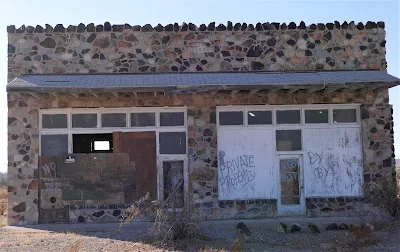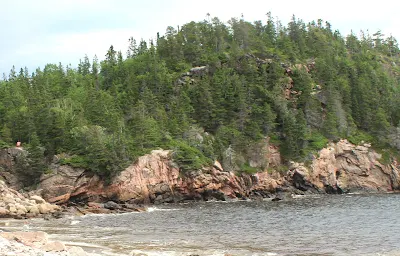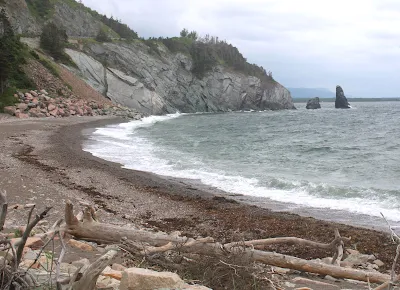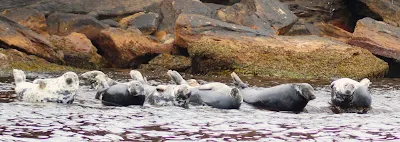 |
| An awesome place to stop and visit |
Transportation comes in many forms but all need fuel - not many folks feel confident if an airline pilot states rather joyfully over the intercom, “Welcome folks to We May Make It Airlines. On today's flight, we may have just enough fuel to make our final destination. My co-pilot already has his rosary beads out, just in case.”
Nope, not booking that airline.
According to the American Automobile Association, most traveling is conducted by driving the highways and byways in personal vehicles - of course, a pair of open eyes when driving anywhere in Southern California will prove that also.
“Doesn’t anyone work?” one driver may ask while sipping on his Mango Dragonfruit Refresher - of course with added coconut milk. “It’s two in the afternoon and we’re at a standstill in the Cajon Pass.”
All conveyances that transport folks from here and there need fuel, no matter which type of energy-producing fuel that may be.
Pull up to a gas station and within minutes the traveling group is back on the road, or pull your EV into one of those plug-in thingies and then take a long lunch and a nap and then you are back on the road again, eventually.
But the inner fuel for the travelers is one of the best parts of getting from point A to point B. There are so many choices along the roadways of America. Small diners, chain restaurants, fast food joints, curbside entrepreneurs, and places that have not seen an ‘A’ in their window since opening day.
There are also those favorite spots that we find ourselves drawn to time and again while traveling familiar territory, and one of those for me and my beautiful wife, Laureen, is Peggy Sue’s along Interstate 15 in the small town of Yermo.
 |
| A lot of 'nice' rides show up at Peggy Sue's |
My personal history with the iconic restaurant goes back decades. In another life, I taught at the small but academically strong Silver Valley High School. A great place where staff really worked with their students to ensure a good quality education.
One of the programs I was involved with, Peer Counseling, had students interacting with fellow students to resolve various negative issues that may be causing personal angst. And nobody likes angst. It dealt with students talking with their peers on a one-on-one basis which is often more beneficial than an adult trying to make sense out of a teenager's life.
“My parents don’t understand me,” one teenager may say to a Peer Counselor.
“That’s because parents are dolts who often wear mismatched socks,” may have been the reply from my well-trained Peer Counselor. I always thought humor was a great way to get to the root of any issue.
I also used to say, ‘If you have issues, we have tissues.’ The point was, that my students believed in their heart of hearts that they could be the ears and voice for teenagers to listen to without giving advice, unlike adults who always had concrete solid answers for every problem that a fourteen-year-old was dealing with.
Really?
We raised four daughters - I still don’t know half of what the girls said for the entirety of their teenage years. I just nodded or told them to ask Mom.
Besides being a legitimate school class, we also operated a school club so we could hold various fund-raisers in which we could put on events schoolwide for the students at Silver Valley High School. And, that is where I came into contact with Peggy Sue Gabler, the owner, who along with her husband Champ, purchased the establishment in 1987.
Our Peer Counseling Club held its first car wash at the famed restaurant and Peggy Sue herself assisted, so naturally, it was a great success. She was charming and affable and even gave my students a good tip for washing her car in addition to free pizza and soft drinks.
It’s a good memory, and so Peggy Sue’s has been a favorite stopping place whenever we travel north or south along Interstate 15.
But, even without those personal recollections on my part, the joint is a cacophony of sights and sounds - and just a downright fun place to wander, even if putting on the feedbag isn’t the traveler's number one priority.
However, who could turn down anything on a menu that features such sandwiches as the Patti Page Patty Melt, the Mickey Mouse Club Sandwich, the Fabian French Dip, or the Big Bopper BLT?
If it sounds as though the customer may have stepped into a time warp when entering the double doors of Peggy Sue’s, they would be correct.
In fact, the front doors are ensconced below a huge facade of a 1950s jukebox. Don’t ever say Rock and Roll is dead in Yermo!
When Champ and Peggy Sue bought the restaurant, it was small and in need of a major facelift. They did not hesitate to sink hard-earned money from the time Champ spent working at Knott’s Berry Farm and the Hollywood acting career of Peggy Sue. In fact, she was so well-known in those Hollywood circles that as a person wandered through the restaurant, they would spy dozens upon dozens of movie posters and personal photographs showing Peggy Sue sidling up to some of the most notable actors from the silver screen.
On our last stop, there was a photo of Whoopi Goldberg telling the owners what a wonderful place they had going on the wall by our booth.
As posted on their website, Peggy Sue wrote; ‘We wanted good homemade food and great 50s music.’
And that they accomplished. But as the business grew, and more and more customers came in from the bustling Interstate just to the north, the restaurant had to expand to make room for the deluge of customers they were having every day.
The place reminds me of the Winchester House, without the hauntings, just keep adding on until there’s no more room to add onto.
The couple also realized they had a hit on their hands and decided year after year to not only expand in size but to make stopping at the restaurant not only a food fanfare but a true destination all by itself.
‘We opened a 50s style Five & Dime store with curios and memorabilia, soda fountain, ice cream parlor, and a pizza parlor,’ as stated on the website. "We even created our own Dinosaur park.’
 |
| Giant gorillas and dinosaurs await the visitor |
There are tall broad trees that give ample shade during the hot summer months with cooling blue water ponds surrounded by large swaths of green grass giving the entire experience a feeling of entering an oasis within the Mojave Desert.
 |
| As oasis for pirates, dinosaurs, and visitors |
 |
| Get ready to Rock and Roll |
Of course, my favorite is the giant sculpture of King Kong looking down upon us rather hauntingly - as any oversized ultra-intelligent simian would.
But before leaving this rather fanciful world that Champ and Peggy Sue created, a must-see is the gift shop where every piece of the 50s and 60s reside. There are full-sized posters of Marilyn Monroe and Elvis Presley, and not far off, there are a couple of hardened plastic sculptures of the Blues Brothers.
 |
| The Blues Brothers as Peggy Sue's, Yermo, California |
 |
| The King awaits |
“Viva Las Vegas,” the mechanical Elvis sang to me while nodding his Elvis face with a turban attached to the dark and perfect hair. “I see in your future not a thing worthwhile. Now the pretty lady beside you, yowie!”
It was time to leave.
Peggy Sue’s is a must-stop for a quick bite or a lingering to take it all in. No traveler will be disappointed.
For further information; https://www.peggysuesdiner.com/
John can be contacted at; beyersbyways@gmail.com
.JPG)
.JPG)
.JPG)
.JPG)
.JPG)
.JPG)
.JPG)












.JPG)






















